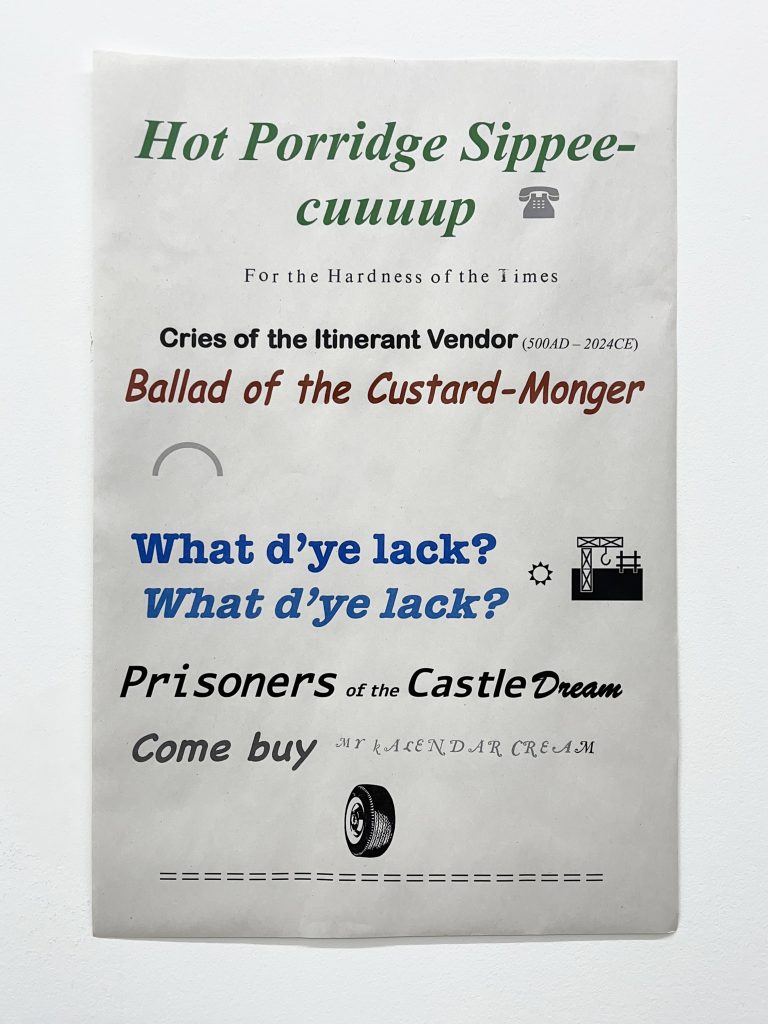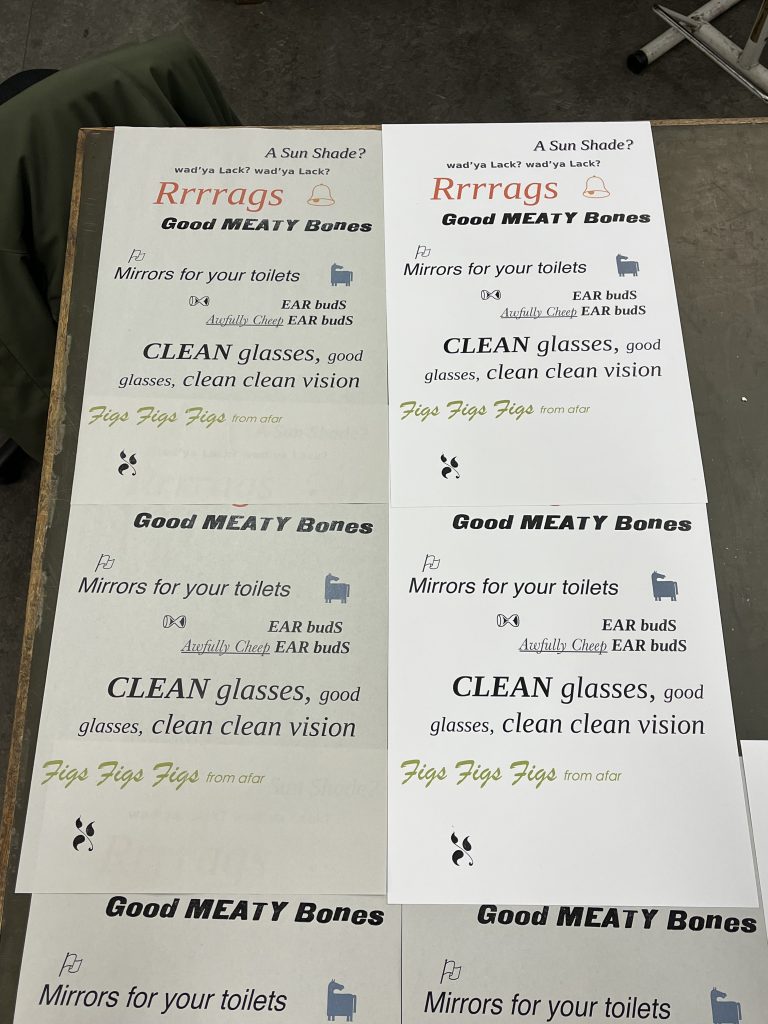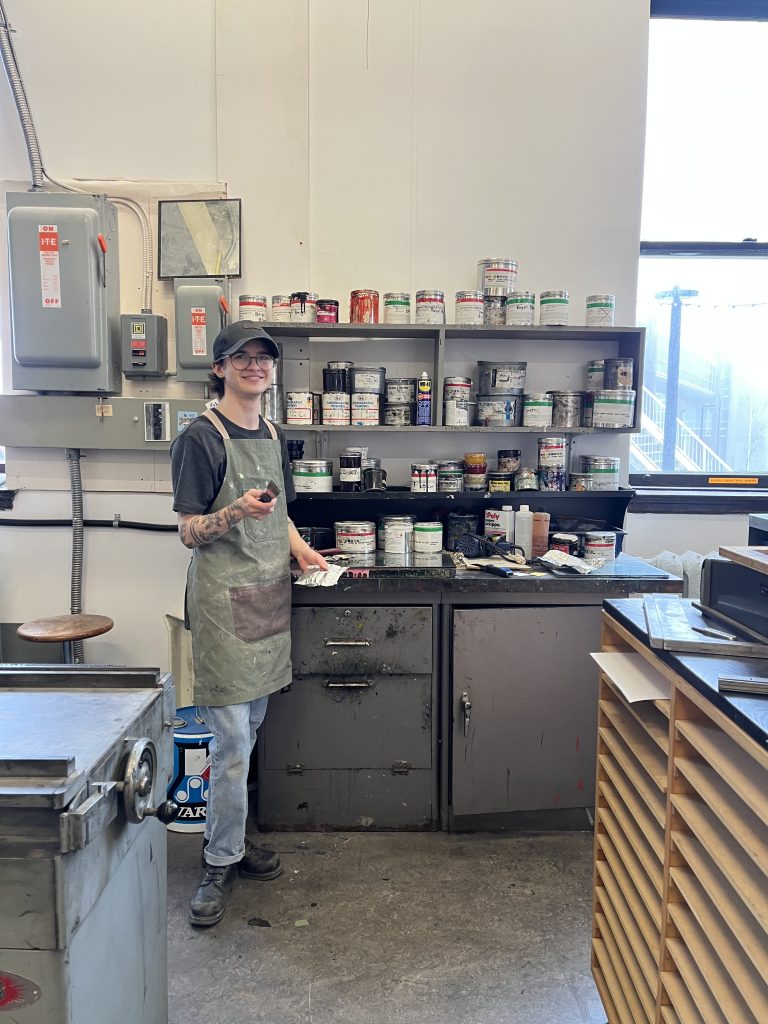The Dawson Print Shop continues to be a hub for creativity, learning, and innovative creations in printmaking.



Some of the posters produced from the ‘Wandering Calendar’ project. Credit: Paul Kajander.
If the history of print had a face—a typeface, that is— it would most likely live in the Dawson Print Shop at NSCAD University.
Housing one of Canada’s most extensive collections of functional typographic material, the Dawson Print Shop has myriad historic letterpress printing technologies, with more than 1000 typefaces— each with unique fonts that you won’t find anywhere else today.
Paul Kajander, an artist and part-time faculty at NSCAD, was in the Dawson Print Shop for the first time on April 16, working with artist Ashes Withyman as part of the Wandering Calendar, a project co-organized with NSCAD sculpture faculty, HaeAhn Kwon. Kajander was amazed by the depth of resources at the site.
“My jaw dropped to the floor,” he says with a laugh. “I was really grateful to see that there is a facility like this existing at NSCAD. There are so many fonts, type sets, and sizes, and I think this kind of collection is really unparalleled. Some of those fonts are wild, unimaginable, and they definitely don’t exist in your standard Microsoft Word program.”
‘It would have been impossible to realize this without the Dawson letterpress’
The Dawson Print Shop is not only a learning space for students, it is also a hub for visiting artists and creatives who want to push the possibilities of printmaking. For Withyman, the Dawson provided the space to teach declining skill sets that would be hard to find in a modern classroom.
“Amongst the ongoing de-skilling of material practices and processes, it’s incredibly important to give students access to these alternative hands-on technologies and empower them to explore slower methods of text and image making,” says Withyman. “This is what makes the Dawson such a unique place. “
Hosted by Kunstverein Toronto, the Wandering Calendar project explores the ways different cultures and communities have historically recorded time. Withyman’s contribution resulted in a series of 13 posters made with typeface and fonts that would have been popular decades ago or even hundreds of years ago, transforming them into a sort of time-travelling message that has inserted itself in a modern space. The vast variety of fonts and type available at the Dawson gave Withyman and Kajander the tools needed to bring the project to fruition.
“It would have been impossible to realize this work without access to the Dawson letterpress,” says Kajander, who facilitated the workshop while Ashes joined remotely. “You can’t just fit something like a letterpress studio into your kitchen or in your basement. Even if you were able to access a small press or an independent letterpress, there’s no way that anyone else has the amount of material for you to work with.
“I don’t think Ashes anticipated that there would be this richness of fonts available for us to try to incorporate into his work. It was really meaningful to see how happy he was with the outcome of the project,” he continues
'It's a great example of print-related research-creation work that can be hosted in the Dawson'
NSCAD student, Lee Richard, had the opportunity to work with Withyman and Kajander during the Wandering Calendar project, and says it gave him the opportunity to work with established artists in the field.
“As a printmaking student, it was an exciting first step into working with established artists using print media in their work,” he says. “The collection of wood and metal type at the Dawson is incredible, and you can get a sense of the potential the space has for projects like Wandering Calendar. I hope that through future classes and projects like this, the collection can continue to be used and cared for.”
NSCAD currently uses the Dawson Print Shop as a teaching space for short modules in classes across various divisions. Interim dean Dr. Jacqueline Warwick says a project like the Wandering Calendar is one of the many reasons the Dawson remains an invaluable resource at the university.
“The Wandering calendar is a great example of print-related research-creation work that can be hosted in the Dawson,” says Warwick. “The shop will be active in the fall with more research projects, and NSCAD is in the process of designing new course offerings for 2025 that will focus on contemporary approaches to book arts, letter pressing, and post-digital forms of making.”
For Kajander, the Dawson Print Shop is a resource of historical importance that will hopefully continue to provide valuable learning experiences for students and teachers at NSCAD.
“I could imagine really exciting possibilities for teaching a course there,” he says. “Even when I was helping Ashes realize his work, I had so many thoughts about works that I would love to make at the Dawson. It’s been really inspiring to be there.”

To learn more about the Dawson Print Shop and upcoming workshops, visit NSCAD’s Extended Studies website.
